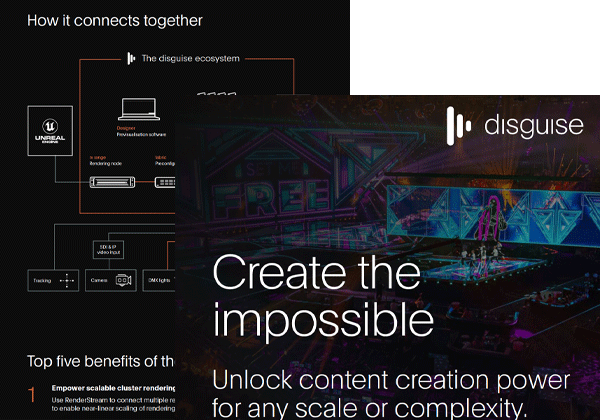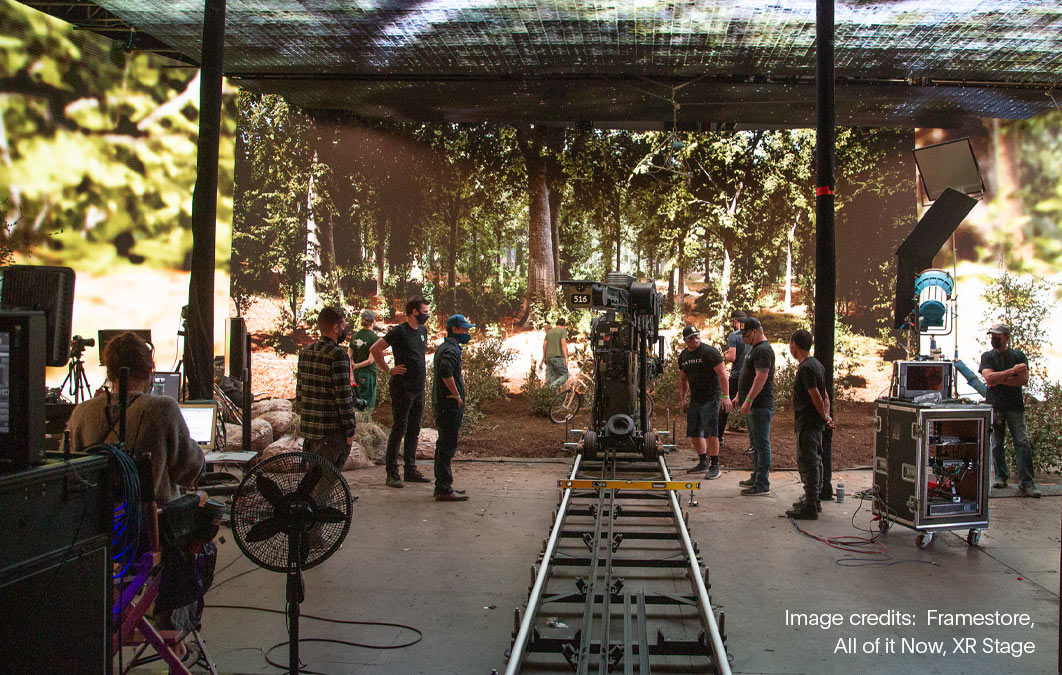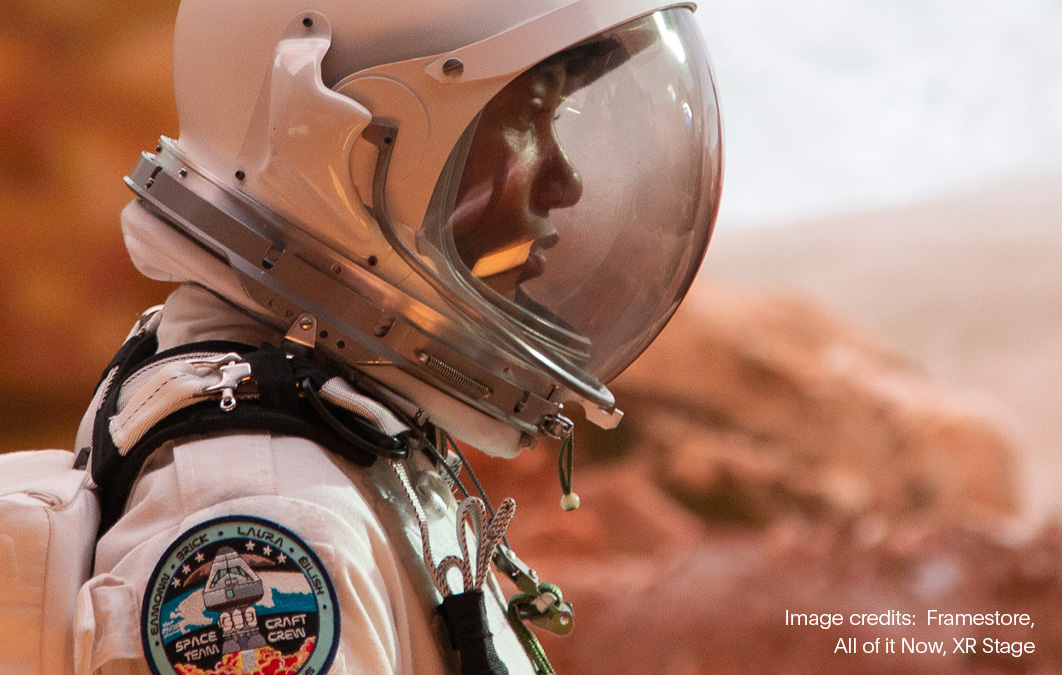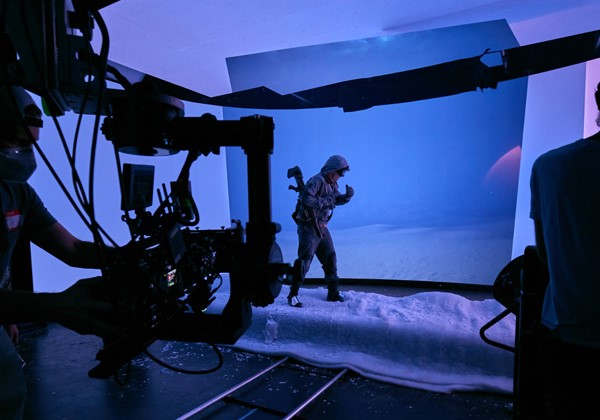
blog 2021 6 min read
In conversation with film producer Lee Trask

LA-based films producer Lee Trask is one of the early adopters of virtual production and a firm believer in its power to enhance filmmaking as we know it. Following her recent experience with disguise on set, she tells us why she prefers working within an LED volume and the opportunities this can open up for the VFX industry.
Tell us about your experience as a producer and what made you want to become one?
I actually started as a PA in the art department, at Ridley Scott’s company RSA Films. I have an art degree, so that was the logical entry point for me. Production was a siren’s call and it lured me from the art department. I was drawn by the many layers of how all the departments fit together and supported each other, and how each component was crucial for the success of the whole. I love working with so many talented people, figuring out how to maneuver through the unique challenges of each project.
What does virtual production mean to you compared to traditional filmmaking?
Virtual production (VP) is the next step in making what was once impossible, happen, in-camera. It’s the evolution of putting actors in places that don’t actually exist, or aren’t physically accessible with a large traditional film crew, or are too expensive, or impractical on some other level.
Filmmakers have always had to invent ways to accommodate creative wants, and the solutions are always changing. Rear screen projection, blue/green screen with VFX replacement… but VP is not just a step, it’s a leap.
Being able to control so much of the environment, lighting, set integration affords filmmakers a whole new level of collaboration and creativity that previously has been more fractured.

Can you tell us a bit about your role in Blink and why this was such a significant project for virtual production?
I have been working with Framestore’s VFX Supervisor, Michael Ralla, and film director Marc Forster, for a few years. I have immense respect for Michael’s depth of knowledge, and his willingness to share that knowledge.
We had done a number of LED/plate-based jobs with Marc, and I was really amazed by the potential of VP. Michael decided to develop a VP project from scratch, that involved creating bespoke content in Unreal Engine to display the abilities of the content through a narrative piece. He has been involved with so many facets of this technology, and is one of the most LED/content-versed VFX supervisors out there. He worked directly with the folks at UE and with disguise Technical Solutions Specialist, Marcus Bengtsson, to bring all the technical elements together. The next step was to bring in someone who understood the LED technology from a production point of view... and that’s how I became involved.
Blink was also a very important step for the crew: unless a crew member had worked on the Mandalorian, chances were that they hadn’t had exposure to this workflow yet. Blink gave the crew a chance to use the tech and learn. Now all of those crew members are ambassadors.
It was also important because it was a project created entirely by people giving off their free time, their resources, their equipment, to create something using the cutting edge of this technology. We can’t thank all the crew and vendors enough for being willing to contribute to this project.
Because we were using both plate-based and Unreal Engine real-time content, one of the things that was most important was the flexibility of the server. Being able to switch back and forth seamlessly was crucial for us to be able to complete our schedule, and disguise allowed us to do that. The server was rock solid, as were the operators.
What are the benefits of virtual production in your role as a producer?
There are so many benefits! The volume provides interactive lighting on set, which is never achievable with green screen. Everyone involved with the production from prep to post is contributing before principal photography, because it’s all in-camera. The VFX work, which is traditionally done months after principal photography, and separated in many ways creatively, is now done during prep, so all departments weave together in a more holistic way.
So many constraints are removed from the equation: time of day is no longer a factor, weather is no longer a factor. For example, for Blink, over the course of a 12-hour day, we shot five different “locations”: a moon-scape, two different forests, a traffic jam on a highway, and a skydiving scene. The media operators were able to provide us with environment changes within minutes.
Traditionally, I never would have been able to schedule a live-action location plus stage (with three complete set changes) in one day. It proved to me that it was not only an incredibly creative tool but that it could allow us to compress schedules and costs in a way we have not been able to do up to this point and make much better use of our time with our actors.
What is the hardest part of your role in virtual production?
Getting people to switch gears from “we can worry about this later, in post” to “we have to worry about this now because we’ll actually be shooting it”.

Watching virtual production evolve over the last few years, what do you see as the key benefit to visual effects teams?
I have seen that handing footage off to VFX, and having them operate almost as a separate entity, has often not allowed for the best creative outcome. I think having the VFX team part of the conversation from the get-go, and integrated into the on-camera photography has an enormous benefit.
Based on your experience, how do you educate the industry about the benefits of xR and LED in film production?
I’ve found that because each project is different, the best approach for me is to have a conversation with the filmmaker, discover what the desired outcome is and how xR and LEDs can achieve that outcome more elegantly and more cost-effectively. It’s not a mass approach to education, but I prefer it.
Where do you see the future of virtual production heading?
I wouldn’t even know how to imagine that. When I first started using LEDs with background plates, I never could have imagined completely CG environments with real-time camera tracking. Unreal Engine is going to enable filmmakers to take their creativity and ingenuity to a completely different level. Seeing what’s coming down the road with UE5, it’s going to forever change the way content is created and used in film and TV. I am so excited to see what’s next!

